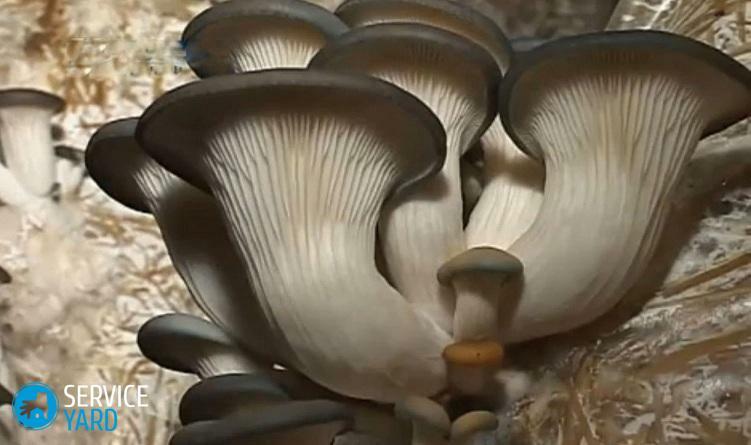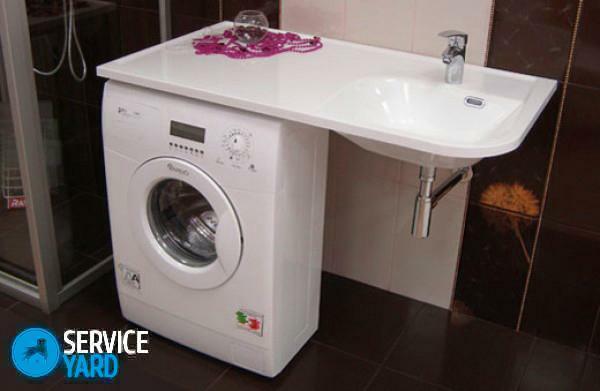Freshly squeezed fruit or vegetable juice is a real storehouse of vitamins and microelements. It is recommended to drink to people who adhere to healthy diet and therapeutic diets. It is much easier for babies to offer a mug of a bright drink than to persuade to eat a carrot or an apple. A glass of fresh with a crispy toast or toast - an ideal breakfast for any member of the family. Alas, a package nectar bought from the store from an unknown concentrate often contains more dyes and flavors than vitamins. So all those who want to lead a healthy lifestyle, you should choose a good juicer and do your own cooking useful fresh.
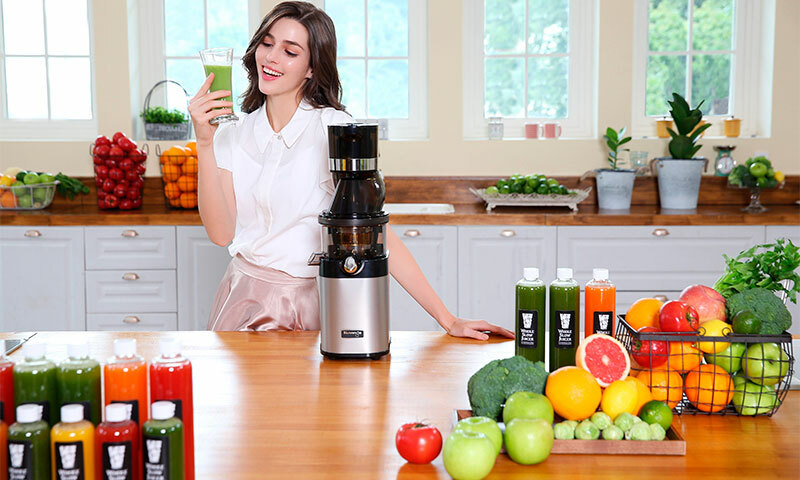
Contents:
- The best juice extractor manufacturers
- The principle and operation of the
- juicer. Varieties of the
- juicers. Selection parameters for the
- juicers. What kind of juicer to choose?
- . How much do
juicers cost? The best juicer manufacturers - which firm to choose
? Buyers prefer the juice extractors of famous brandsquality and rich functionality.
The best manufacturers of the segment are the following companies:
1. Philips
2. Bosch
3. Panasonic
4. Polaris
5. Braun
Read more about the flagship models of these companies in the ranking of the best juicers. In the meantime, let's see what juicer is right for your family.
Principle of operation and arrangement of the juicer
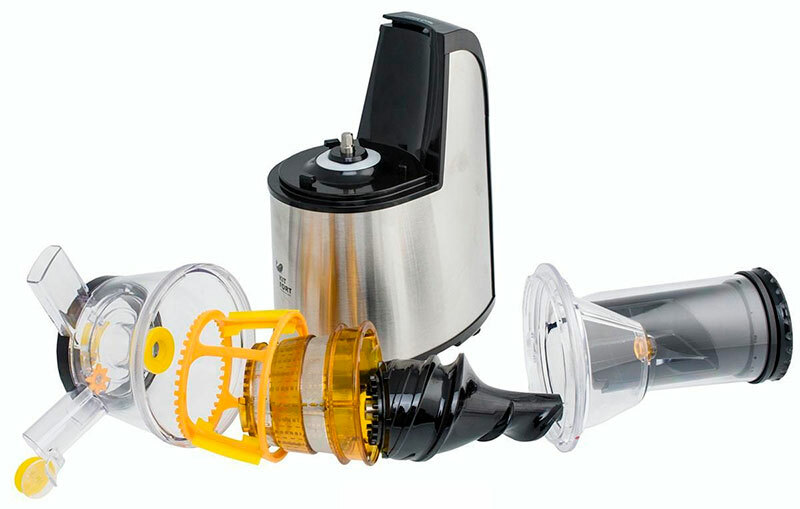
Juicer is a household kitchen appliance designed to produce juice from fruits, vegetables, nuts and herbs. The variety of these units on the market is quite large and they all work in their own way, but the general principle remains unchanged.
Each model has figured nozzles or knives that destroy the flesh of fruit, allowing the juice to flow freely into the container. They can be immobile( as, for example, in citrus juicers), driven manually or by an electric motor.
As for the device device, with some amendments to the design features in any juicer you will find the following elements:
• Body - in electric models it additionally installs the engine;
• A neck with a pusher or just a wide hole for loading fruit;
• Chopper;
• Juice collection container;
• Container for cake( may be absent).
Depending on the force that drives the working elements of the juicers into motion, they are divided into 3 main types:
1. Hand-held
Manual models are simple to primitive, since all work is performed by a person, and the device turns into a regular tool for extrusionjuice. Most often in this version are juicers for citrus.
2. Mechanical
Mechanical is a kind of press, which must be handled again. Bright representatives of devices of this type are a juicer for tomatoes, more like a hand grinder, as well as presses for pomegranates and grapes.
3. Electrical
Electrical appliances often operate on the same principle as the auger mechanics, only the motor is connected to the shaft. However, among modern juicers there are many rotary models, more like a hybrid of graters and centrifuges. In any case, the efficiency of electrical aggregates is the highest, since they are able to extract from the pulp from 70 to 95% of the juice.
Kinds of juicers
For citrus fruits
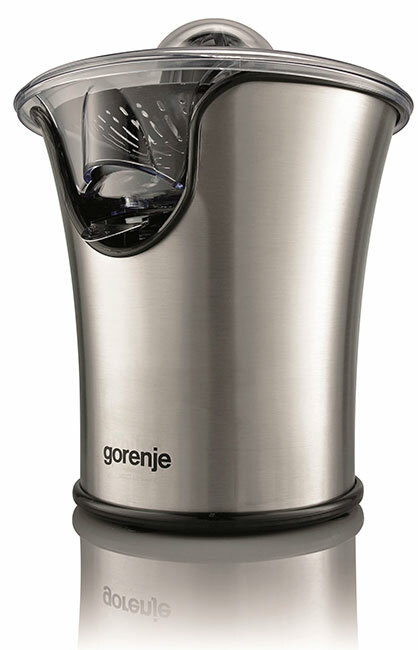
The simplest kind of technology, designed to produce fresh juice from lemon, orange, lime, grapefruit and other citrus fruits. It is a kind of a bowl with a conical ribbed nozzle, on which you need to thread half of the fruit. Then everything depends on the type of machine chosen: if it is an electric model, it is enough to turn on the motor, and the rotating nozzle squeezes out all the juice from the pulp into the container. With a manual squeeze you have to independently scroll the citrus.
Pros:
- Compact size;
- Simple and reliable design;
- Economical power consumption even for electric models( 20-60 W);
- Low price.
Cons:
- Not suitable for processing other fruits.
Centrifugal( rotary)
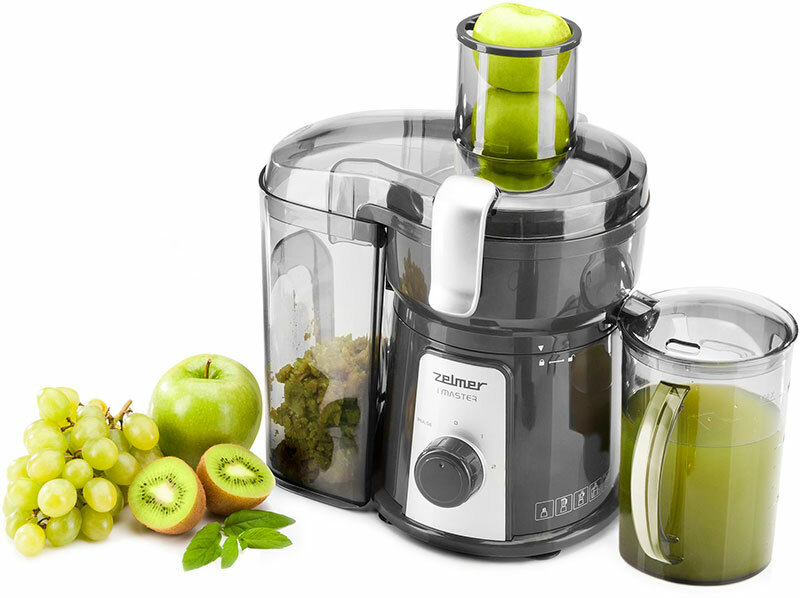
Centrifugal juicers are the most popular and purchased. This type of instrument is suitable for processing all berries and vegetables( except fruit with bones).The principle of operation of rotary technology is similar to the operation of a washing machine centrifuge. Only here there is an iron basket-separator, and above it rotates at a speed of 10000 revolutions per minute a disc-grater, grinding the fruit.
Juicy pulp is separated from the cake in the separator, and the released liquid under the influence of centrifugal force flies out of the basket and drains to the receiver. Alas, the high speed of the mechanisms leads to the heating of the inner bowl, which affects the nutritional value of the drink - some vitamins have time to collapse. The motor itself is heated too. This makes impossible its long work - it is necessary to stop the car periodically for rest.
Modern rotary juicers can come with 2 types of separators. Cylindrical allows you to extract up to 90% of the juice from the pulp, but they do not have a system for removing the spent oilcake. You will have to periodically stop the appliance and clean up the remains of the fruit yourself. Juicers with a conical basket throw cake into a special container during operation. But they have another drawback - a smaller yield of juice than in cylindrical models( by about 20%).
Pros:
- High speed of operation;
- Simple operation;
- Wide( up to 9 cm) throat for laying the whole product;
- Relatively low cost.
Cons:
- The juice is heated, and some of the nutrients in it are destroyed;
- At high speed, the drink is produced with foam;
- Due to the rapid oxidation of the juice is not suitable for any long-term storage.
Screw
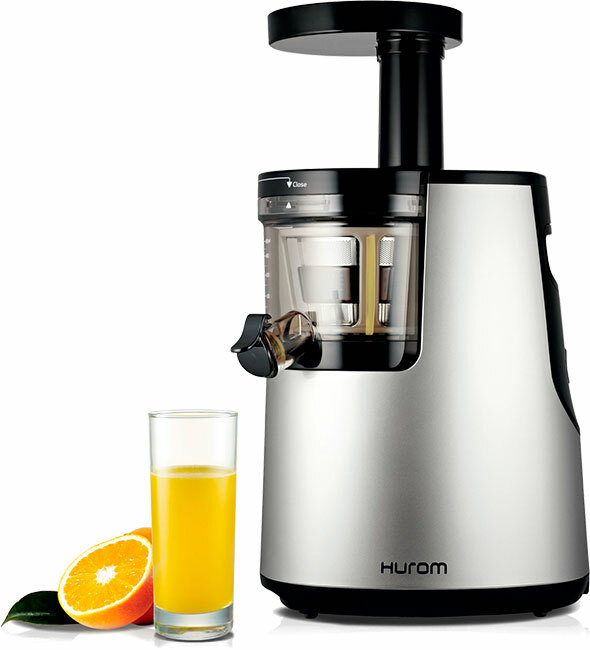
In such models, the fruits are ground by one or two rotating augers, which drives a low-speed motor( speed on the shaft does not exceed 50-80 rpm).Due to this the device does not overheat and can work continuously for a long time.
Depending on the design and method of laying products, screw juicers are divided into vertical and horizontal. But they both have equally high efficiency. Such devices are able not only to squeeze up to 95% of the juice from fruits with seeds, vegetables and herbs - it is quite possible to squeeze out oil from nuts, grind coffee or spices.
Pros:
- Efficient spinning, minimum amount of waste;
- Quiet engine operation;
- Does not heat juice, keeping in it all vitamins;
- Can process large volumes of products without stopping.
Cons:
- Works slower than a centrifugal juicer;
- There is a lot of pulp in the finished juice;
- Not suitable for processing too soft fruits( bananas, ripe kiwi) - turns them into puree;
- Narrow neck - you have to cut the products for the bookmark.
Selection parameters for
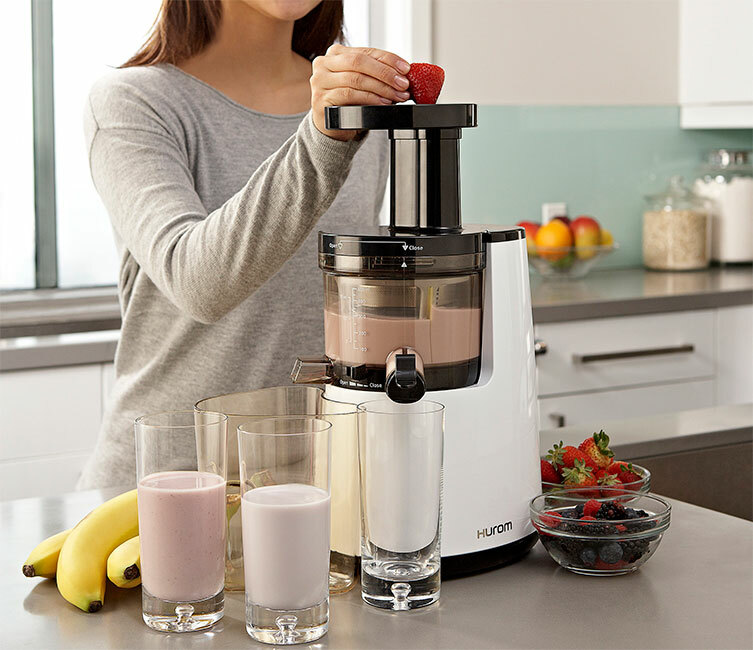
Before going to the store for a juicer, determine what kind of fruits and vegetables she will have to work most often, and what amounts of juice consumed by your family. Will you use a new appliance for cooking other dishes? Having determined the tasks that you put before the juicer, you can already choose the optimal design. And then all will decide the technical characteristics of the device.
Material of construction
The body of the mechanism can be plastic, aluminum or steel. The first option is easier, but short-lived. In addition, there are increased requirements for environmental safety, therefore only food plastic is used for the production of juicers.
Aluminum and steel are stronger, but more expensive. Nevertheless, all internal parts of the device( separator, screws, strainer) should be made only from stainless steel, which does not react even with acidic products.
Power
Here everything depends on the type of device and the fruits processed in it:
- The citrus juicer to cope with the work is enough and 50 watts;
- For the processing of soft fruits such as peaches and bananas, an aggregate with a capacity of 250-500 W;
- Juice extract from solid fruit( apples, pears) will require at least 800-1200 watts.
Power, albeit indirectly, largely determines the rotation speed of the working elements of the juicer. And the more it is, the faster and more efficient it will be to squeeze out the juice from the fruits. One "but": a drink obtained at high speeds will turn out to be cloudy because of the excess content of chopped pulp. In general, to obtain a quality juice from a rotary-type juicer, the rotational speed is about 10,000 rpm.
speed modes Different hardness products require their spinning technology. Therefore, pay attention to the number of speeds and the possibility of switching them. This will allow you to put more power for fruits with dense pulp or choose a gentle regime for processing delicate fruits.
Modern juicers can have up to 9 speeds, although 3-4 are enough for home use. Also, the availability of impulse and reverse modes is welcome - they will make the processing of solid products more efficient.
Noise output
For domestic juicers, this indicator is not standardized, but some devices emit very strong noise during operation. And it can come not only from the engine, but also be the result of poorly fixed and rattling design elements. The most "quiet" juicers are screw, but even we recommend checking them in the store for the level of noise that they produce when working at full speed.
Design features
Some of the nuances that designers of household juicers have come up with are able to make working with the device more comfortable and convenient.
Pay attention to such details:
1. The diameter of the filling neck should be as large as possible( 8-9 cm) - this will allow you to immediately lay whole fruits in the machine without cutting them.
2. The discharge mode of the spent oil cake will make it possible to process large volumes of fruits practically without stopping. It is very convenient if a separate removable container is provided for this in the juicer.
3. Foam removal separator will provide a clean, clear drink, which even the whimsical children will not refuse.
4. Rubberized legs provide the machine with stability on the table.
5. Anti-drip system is a useful feature that will not allow you to stain the tablecloth after you have filled the glass with ready-made juice.
Availability of juice container
Here, the owners have to weigh the pros and cons, because the designs with a complete glass and without it plus and minus about fifty.
The presence of a built-in juice tank allows you to protect the contents from accidental spills, and the scale on the transparent container will show the amount of the finished beverage. The amount of built-in capacity is usually small, but it will be enough for a couple of bookmarks.
The absence of a receiving container indicates that the juicer has implemented a direct juice supply system directly into the supplied mug or glass. A great excuse not to wash extra dishes.
What kind of juicer to choose
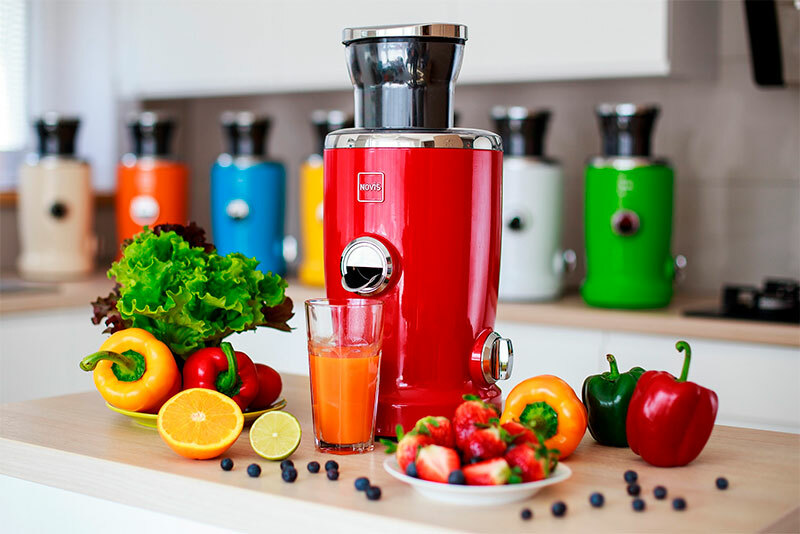
1. To connoisseurs of lemonades, oranges, as well as to fans of using citrus juices in cooking, there will be enough inexpensive hand-held compresses for the processing of citrus. If you need to twist a large number of fruits, take an electric model with a power of about 25-50 watts.
2. For a family of 2-3 people who drink juices from a variety of products, a centrifugal apparatus with a cylindrical separator is suitable. The optimum power of the device is within 700 W.
3. For a large family of 4-5 people and fans of "eco-vegans", a rotary crocker will also fit, only this time with a cone separator and a power of at least 1 kW.
4. To avid gardeners, who have a large garden area and have the opportunity to drink free natural juices at least every day, you need a juicer that can process serious amounts of various products. It is better to give up the speed and choose a screw model. Power is not particularly important - enough and 200-300 watts.
How much do
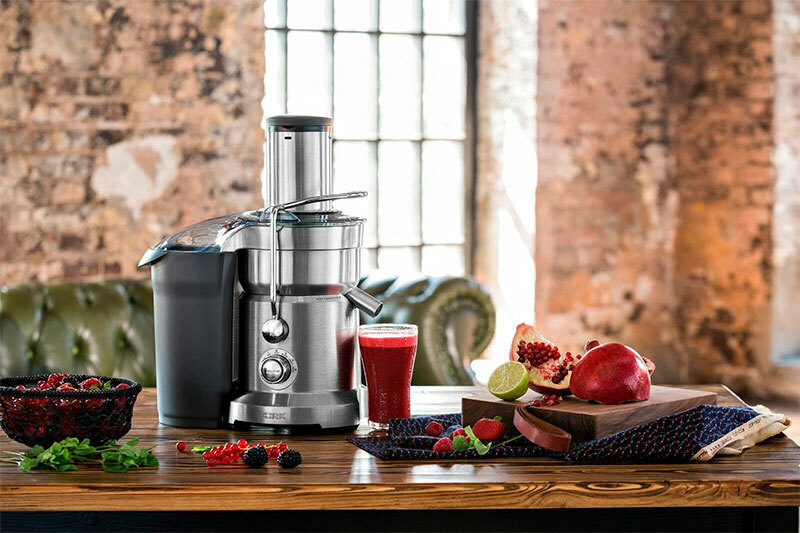
juicers cost? 1. The simplest hand-held juicer for citrus fruits will cost you from 100 to 400 rubles.
2. For electric model in cheap plastic it is necessary to give not less than 350-800 rub. The prices for more functional equipment with direct juice supply and additional options like "drop-stop" start from 1000 and are lost in the clouds above the sky, having jumped the mark of 40,000 rubles.
3. The cost of rotary juicers without pulping is around 1.5-40 thousand. If you add a cake removal system, a stainless steel casing and a full set of useful functions to such devices, the price can soar up to 90-110 thousand rubles.
4. Screw compressors in vertical design can be bought at a price of 3 to 35 thousand rubles, although there are super-expensive models worth 85-100 thousand. The horizontal ones are in the same price category, only their ceiling does not exceed 70,000 rubles.

